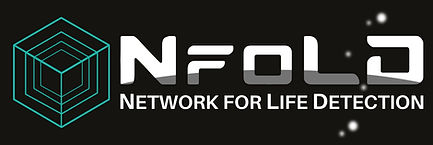Essential Ingredients in the Search for Life on Ocean Worlds
- jmalas2
- Mar 27, 2023
- 3 min read
Dr. Peter Willis spoke at the February NfoLD Forum about the Ocean World Life Surveyors (OWLS) instrument – which contains both chemical analysis and microscopic imaging systems. The award winning system was designed to search for life at the molecular level to “provide maximum coverage of all the biosignatures in the Ladder of Life Detection,” and to fully characterize both the organic and inorganic chemistry within any world in which we can obtain a liquid sample.
Dr. Willis believes we need to focus on characterizing the chemical context of the planetary bodies we explore ,“we need a detailed chemical inventory of matter on another planetary system”, he says. Chemical analyses are crucial not only for the detection of biosignatures but also for placing experimental results in the context of their environment.
How can this be accomplished? With three essential ingredients. 1) Liquid-based sample handling, 2) separation science, and 3) mass spectrometry – because at the end of the day life is made of chemicals. That is why the OWLS suite was designed with sample collection and liquid separation systems at its core. Beyond that, OWLS is a system full of “Lego blocks” so that mission scientists can pick and choose the subsystems that are most relevant. Other subsystems can be added to characterize the molecules of interest. The state-of-art suite can uncover anything from amino acids to fatty acids to intact cells, with the necessary detection limits for biosignature detection. Each inorganic, organic, and cellular component can be analyzed with a different subsystem of the OWLS suite.
While liquid separations have never been performed on a spaceflight mission before, separation science is essential to chemical biosignature detection on Ocean Worlds, no matter what those potential biosignatures look like because instruments that do not require as much sample processing simply do not have the necessary detection limits.
Life is made of chemistry
We had the chance to chat with Dr. Peter Willis after the forum, to find out more about how he got to where he is today. His love of chemistry developed at a young age. As a kid, he loved building things and thinking about how everything is assembled from smaller and smaller pieces. “The idea that atoms assemble together to form everything we see – including all of life – is the most interesting thing” says Dr. Willis. He has two young boys who seem to share this interest at a young age – they’re always playing with Lego blocks.
Dr. Willis’ love for chemistry is also the reason he got into instrument development at NASA. He recognized the need to develop chemistry instruments for space exploration. His role as a group supervisor for the Chemical Analysis and Life Detection group at NASA’s Jet Propulsion Laboratory is a dream come true because he gets to work on building instruments that are valuable for space exploration. His advice for early career researchers is to focus on doing something you love. “Science is about exploration”, he says, but don’t forget the bigger picture in your endeavors.
“We are ready for life detection.”
Though the OWLS instrument is at the frontiers of instrument development, it has been fully validated in a simulated mission scenario, as the team tested its life detection capabilities at Mono Lake, California. With a system as advanced as the OWLS suite, Willis says, “We are ready for life detection.” Indeed, OWLS forms the core of the Enceladus OrbiLander life detection instrument suite.
No matter what potential extraterrestrial life looks like, it will be made of chemicals. That’s why understanding the chemical context of whichever world we plan to explore next is fundamental to astrobiological discovery. Dr. Willis envisions that all future NASA missions will have integrated payloads, so that we can characterize a single sample in a variety of ways.
Learn more about Dr. Willis’ work on his laboratory group website, and in his white paper entitled How to Search for Chemical Biosignatures on Ocean Worlds.

Komentáře